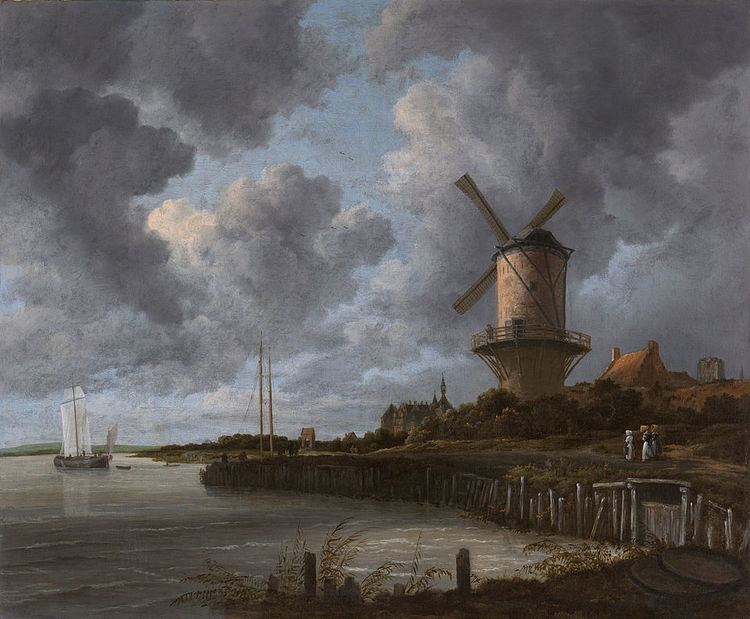Year c. 1670 Dimensions 83 cm x 1.01 m Created 1670 Periods Baroque, Dutch Golden Age | Media Oil paint | |
 | ||
Website Amsterdam Collection online Similar Jacob van Ruisdael artwork, Artwork at Rijksmuseum, Dutch Golden Age artwork | ||
Lecture 3 jacob van ruisdael s windmill at wijk bij duurstede and dutch landscape
The Windmill of Wijk bij Duurstede (c. 1670) is an oil on canvas painting by the Dutch painter Jacob van Ruisdael. It is an example of Dutch Golden Age painting and is now in the collection of the Amsterdam Museum, on loan to the Rijksmuseum.
Contents
- Lecture 3 jacob van ruisdael s windmill at wijk bij duurstede and dutch landscape
- Broken brush the windmill at wijk bij duurstede walkthrough
- Other versions
- References
The painting shows Wijk bij Duurstede, a riverside town about 20 kilometers from Utrecht, with a dominating cylindrical windmill, harmonised by the lines of river bank and sails, and the contrasts between light and shadow working together with the intensified concentration of mass and space. The attention to detail is remarkable. Art historian Seymour Slive reports that both from an aeronautical engineering and a hydrological viewpoint the finest levels of details are correct, in the windmill's sails and the river's waves respectively.
It is not known for certain when Ruisdael painted the Windmill. The painting is not dated, as very few of his works are after 1653. Dating subsequent work has therefore been largely detective work and speculation. It is assumed that it was painted in 1670.
Unlike many other Ruisdaels the Windmill seems to have remained in Dutch hands. It was acquired by Adriaan van der Hoop (1778-1854) of Amsterdam at an unknown date, and bequeathed by him to the city of Amsterdam in 1854. Since 30 June 1885 it has been lent to the Rijksmuseum in Amsterdam, by the city of Amsterdam. Its enduring popularity is evidenced by card sales in the Rijksmuseum, with the Windmill ranking third after Rembrandt's Night Watch and Vermeer's View of Delft.
Ruisdael's windmill no longer stands, although its foundations can still be seen. Another windmill located a few hundred meters further is often confused with Ruisdael's. This confusion was created when Hofstede de Groot in 1911 wrote about the painting:
Broken brush the windmill at wijk bij duurstede walkthrough
Other versions
This scene is very similar to other panorama paintings Ruisdael made of other (unidentified) windmills and these often served as inspiration for later painters of landscape, such as John Constable.
